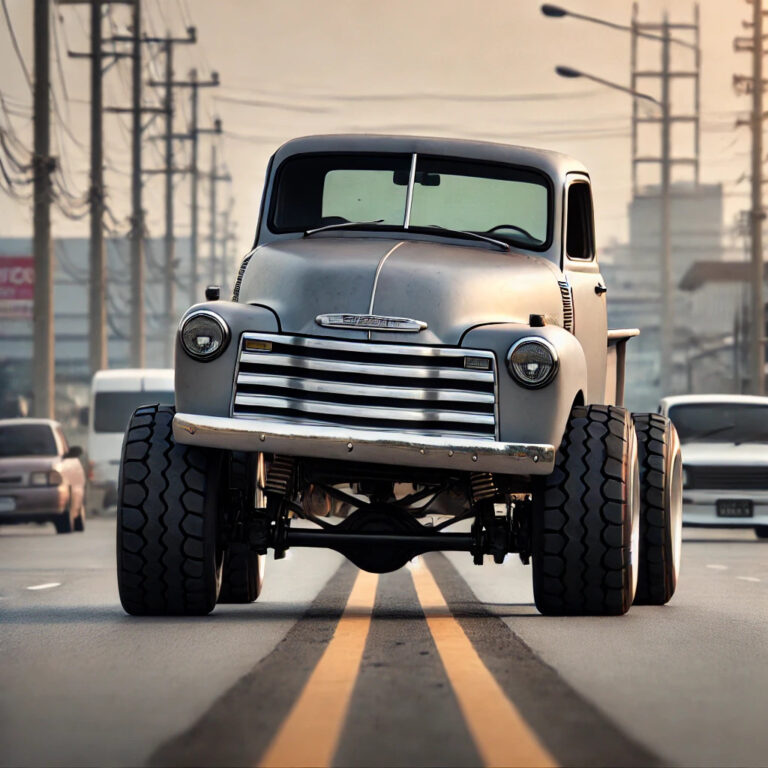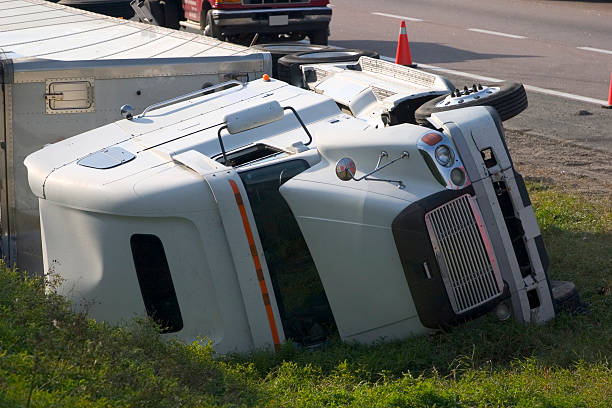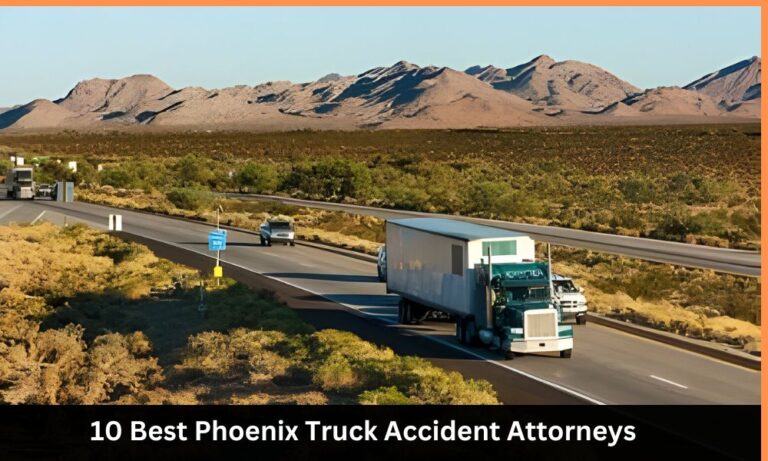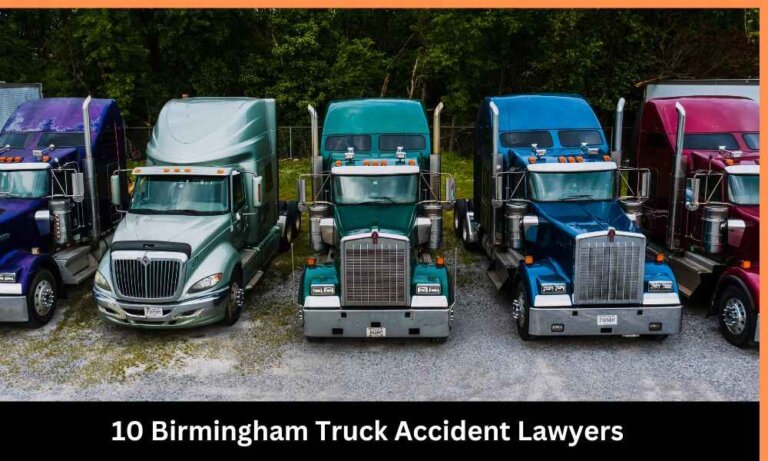Lawyer or attorneys practice in a variety of fields, including family law, commercial law, personal injury, criminal defense, and others.
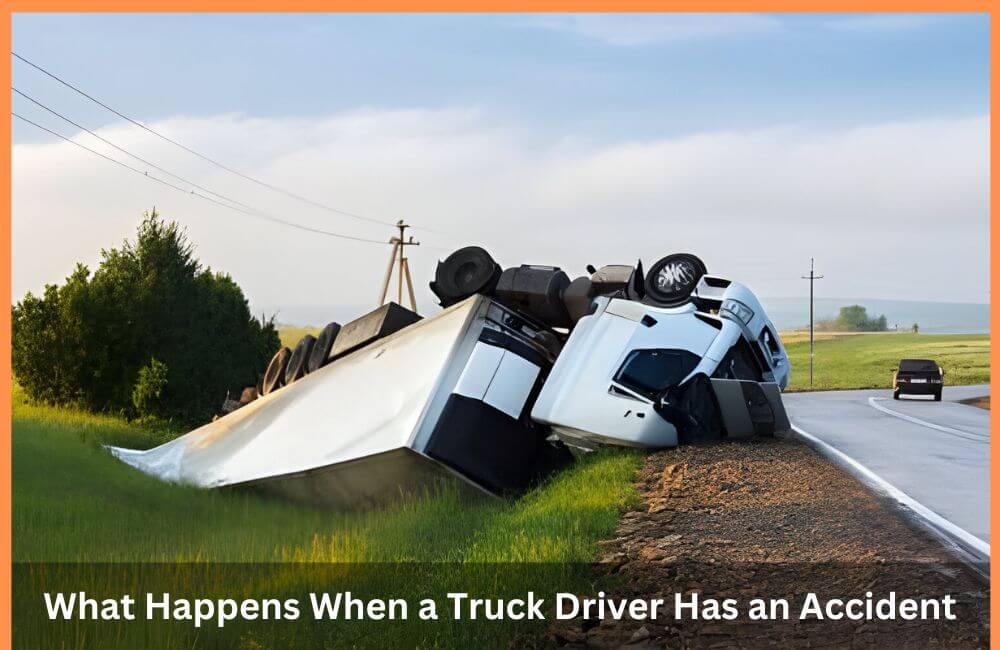
Truck drivers play a vital role in transporting goods across the country, but their demanding job comes with risks. Truck accidents can have catastrophic effects that affect not just the drivers but also other road users.
In this article, we will explore the various aspects of what happens when a truck driver has an accident, including the causes, immediate actions, legal considerations, liability determination, potential consequences, occupational impact, and preventive measures. Following is a brief description of the procedures you should take immediately after being involved in a truck accident.
What Happens When a Truck Driver Has an Accident
When a truck driver has an accident, the police and insurance companies of the drivers involved will decide who was at fault. In some cases, both drivers are at fault, in which cases a percentage of the blame is assigned to each party. If the truck driver is found to be partially or entirely at fault, they may receive tickets as a result of the accident.
A personal injury lawsuit may be filed as a result of a significant, avoidable accident. Whether or not a driver will be fired for their part in a commercial vehicle crash depends on the seriousness of the crash, the driver’s safety record, and whether or not the accident fulfills USDOT’s definition of a reportable accident that impacts a company’s CSA score.
What to Do If You Get in a Trucking Accident
If you are involved in a trucking accident, there are 10 steps you should take to protect yourself and others. Here are some general guidelines to follow:
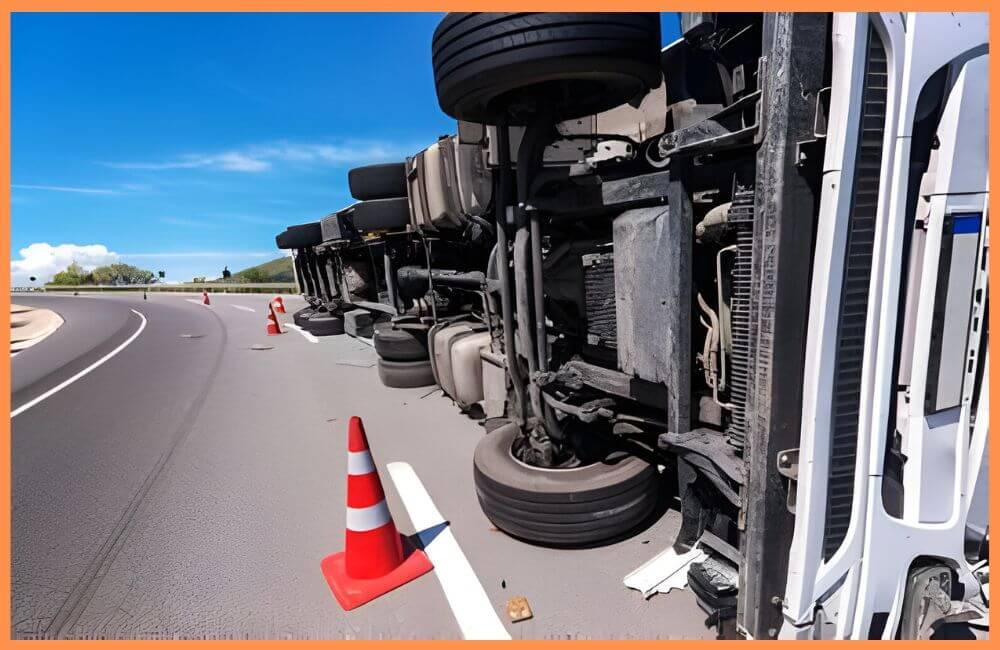
step# 1. Stay at the Accident Scene
When a truck driver is involved in an accident, the first and foremost duty is to remain at the scene. Leaving can result in severe legal consequences, including charges of hit-and-run, which carry significant penalties.
Staying put allows you to assess the situation, offer aid if necessary, and ensure an accurate account of the incident is reported. It’s a moment to keep calm, despite the rush of adrenaline, and prepare for the steps that follow. This initial action sets the stage for a responsible handling of the aftermath, illustrating the driver’s willingness to take accountability for their part in the event.
step# 2. Contact Emergency Services
Immediately after the accident, it’s crucial to ensure that law enforcement and, if needed, emergency medical services are called to the scene. This is not just a legal obligation but a moral one, ensuring everyone’s safety and well-being. The presence of police is necessary for documenting the accident scene accurately, which is essential for insurance claims and legal purposes. It also helps in directing traffic around the accident scene to prevent further accidents and injuries.
step# 3. Exchange Information
Exchanging essential information with all parties involved is a critical step. This includes names, contact information, insurance details, and vehicle registration numbers. This step is foundational for the insurance claims process and for legal documentation. It’s important to be thorough and accurate during this exchange to avoid complications down the line. While emotions may be high, maintaining professionalism during this exchange can prevent additional stress.
step# 4. Seek Witnesses
Finding witnesses who saw the accident can significantly impact the outcome of insurance claims and legal proceedings. Witnesses can provide unbiased accounts of the event, which might clarify discrepancies in the involved parties’ stories. When approaching witnesses, be polite and respectful, and if they agree to help, collect their contact information. Their testimony can be invaluable in establishing the facts of the accident.
step# 5. Report to Insurance
Contacting your insurance company promptly to report the accident is essential. This not only complies with your policy requirements but also initiates the process for any claims. When reporting, be honest and provide as much detail as possible about the incident. The insurance company will guide you through their process, which may include submitting photos of the accident scene and damage to your truck.
step# 6. Document Everything
Documentation is your best ally after an accident. Take photographs of the scene, the damage to all vehicles involved, and any relevant road signs or conditions. Write down your account of the accident while the details are fresh in your mind. This documentation will be crucial for insurance claims and legal matters, serving as evidence to support your recollection of events.
step# 7. Preserve Records
Keeping all necessary documents and records related to the accident is crucial. This includes police reports, witness statements, insurance communications, and medical records if injuries were sustained. These documents are key pieces of evidence that will help establish the extent of damages and support your case in any legal proceedings.
step# 8. Mind Your Words
After an accident, it’s vital to watch what you say. Avoid admitting fault or making statements that could be interpreted against you later. Emotional, off-the-cuff remarks can be misconstrued and used to challenge your account of the incident. It’s best to speak factually and limit discussions about the accident to law enforcement, your insurance provider, and your attorney.
step# 9. Address Injuries
Seeking medical treatment immediately after an accident is crucial, even if you feel fine. Some injuries, especially those related to whiplash or internal trauma, might not present symptoms immediately. Early medical intervention ensures your health is prioritized, and it also provides documented evidence of any injuries related to the accident, which is vital for insurance and legal purposes.
step# 10. Protect Your Rights
Lastly, ensuring that your rights are protected is paramount. This might involve consulting with a legal professional who specializes in truck accidents.
They can offer guidance on navigating the complexities of insurance claims and legal proceedings, ensuring you’re treated fairly throughout. Legal counsel can also help in negotiating settlements and advocating on your behalf, ensuring that your rights and interests are upheld.
Navigating the aftermath of a truck accident involves a series of critical steps. By understanding and meticulously following these guidelines, a truck driver can manage the situation more effectively, ensuring a fair and just resolution to a challenging ordeal.
Read More – Top 10 – Big Rig Accident Lawyers
Common Causes of Truck Accidents
Truck accidents can be caused by a variety of factors. According to a report by Fisher Stark, P.A., some of the most common causes of truck accidents include:
1. Fatigue:
Truck accidents, including fatigue-related ones, are thought to frequently result from overworked drivers. Typically, truck drivers put in lengthy hours of driving with little rest in between.
Because their supervisors and truck owners were so demanding, truck drivers frequently found themselves unable to rest because of the speedy deliveries of items they were required to make. Truck drivers are under a lot of stress and pressure to deliver and meet deadlines, thus this is true. They get little sleep during their journey and the stress and weariness they have built up cause them to become disoriented and sleepy while driving.
2. Drug and Alcohol Use:
The use of drugs and alcohol while operating a vehicle is a common offense among truck drivers. While some truck drivers take drugs or drink alcohol during stops, other drivers bring these items with them.
Any way that alcohol or drugs are utilized can impair driving, and this frequently results in truck accidents. Not just illegal substances but also prescribed medications taken by truck drivers can have harmful effects, such as weakening judgment and coordination, which can lead to accidents on the road.
3. Driver Error:
Despite having greater responsibility for driving safely, truck drivers frequently make the same mistakes as other drivers of motor vehicles. Truck drivers have been known to operate their vehicles when fatigued, intoxicated, high on drugs, or preoccupied. However, research shows that the majority of truck accidents result from the negligence of the drivers of the passenger vehicles, not the truck drivers.
4. Overtaking and Over-speeding:
Truck owners frequently demand that their drivers arrive at a specific location within a certain amount of time. Due to a variety of variables, including traffic in some areas and unfavorable weather, this is not always possible. However, because of the pressure that comes with having to fulfill deadlines and worrying about losing their employment, drivers frequently exceed the posted speed limit.
5. Mechanical Failure:
Mechanical failure is yet another frequent factor in truck collisions. This can include problems that develop as a result of subpar maintenance or design flaws, such as brake failure, tire blowouts, steering failure, or other problems.
6. Weather Conditions:
Truck drivers may find it challenging to keep control of their trucks when dealing with adverse weather conditions like rain, snow, ice, fog, or strong winds.
7. Improper Loading:
Improper loading can result in a truck becoming overweight or off balance, which can cause an accident.
8. Poor Road Conditions:
A driver may lose control of their vehicle due to poor road conditions like potholes or uneven pavement.
9. Lack of Training:
Another frequent factor in truck collisions is a lack of training. Untrained drivers might not be aware of how to react in specific traffic scenarios. All drivers need to be aware of these potential hazards and take precautions to avoid them.
Read More – Top 10 – Truck Accident Lawyers in Los Angeles
How can we prevent truck accidents?
Preventing truck accidents is paramount for road safety. To help reduce the risk of such incidents, here are some practical tips to keep in mind:
1. Maintain Safe Following Distances: When driving behind a truck, ensure there’s more space between your vehicle and the truck than you would leave behind a passenger car.
Trucks have a larger profile, which can limit your visibility of what lies ahead, such as slowed or stopped traffic, construction zones, or other potential hazards. By keeping a generous gap, you’ll have more time to react in case of abrupt stops or the need to swerve.
2. Be Cautious When Passing: Trucks have greater weight and require more distance to come to a stop. Avoid cutting in front of a truck after passing. Ensure you have ample space before merging in front of it. If it’s not possible to pass with a comfortable margin, it’s safer to stay in your lane.
3. Avoid Blind Spots: Trucks have substantial blind spots, which can be perilous for smaller vehicles. An easy rule to follow is to check the truck’s side mirrors. If you can’t see the truck driver’s face in the mirror, they can’t see you either.
When overtaking a truck, do so on the driver’s side, where their blind spot is narrower. Passing on the left while the truck is on the right is a safer approach.
4. Choose Safe Pull-Over Spots: If you need to pull over on the highway between exits, search for a wide shoulder or a designated pull-off area. This provides a safer location for stopping your vehicle.
5. Exercise Caution Around Turning Trucks: Keep in mind that trucks require more space to make turns compared to passenger cars. When you find yourself driving alongside a truck making a turn, give it plenty of room, and avoid trying to squeeze past it. By adhering to these tips, drivers can significantly contribute to preventing accidents involving trucks and promoting overall road safety.
Conclusion
When a truck driver has an accident, the consequences are far-reaching. Immediate response, accurate reporting, thorough investigations, and adherence to legal and insurance processes are vital in managing the aftermath.
What Happens When a Truck Driver Has an Accident – By prioritizing safety, implementing preventive measures, and providing support to drivers, the trucking industry can work towards minimizing accidents and ensuring the well-being of all involved parties.
FAQs
1. What Happens If A CDL Driver Gets In An Accident?
If a CDL driver gets in an accident, they must adhere to specific protocols. These include staying at the scene, contacting emergency services, exchanging information with involved parties, and promptly reporting the incident to their insurance company. Seeking legal guidance may also be advisable to protect their rights.
2. Why are truck accidents so serious?
Truck accidents pose a significant threat due to the substantial disparity in size and weight between trucks and other vehicles. A fully loaded big rig can weigh as much as 90,000 pounds, while the average passenger car weighs a mere 3500 pounds. Moreover, commercial trucks are physically larger and taller compared to the rest of the vehicles sharing the roadways.
3. Why do truck accidents happen?
Truck accidents can occur due to factors such as driver fatigue, distractions, impaired driving, inadequate training, reckless behavior, poor road conditions, and equipment failures.
4. What is the injury rate of truck drivers?
The injury rate for truck drivers varies, but they face higher risks due to the nature of their work, including accidents, musculoskeletal injuries from lifting and loading, and exposure to hazardous materials.
5. Is truck driving a risky job?
Yes, truck driving is considered a risky job due to the potential for accidents, long hours on the road, occupational hazards, health issues related to a sedentary lifestyle, and exposure to various work-related dangers.


